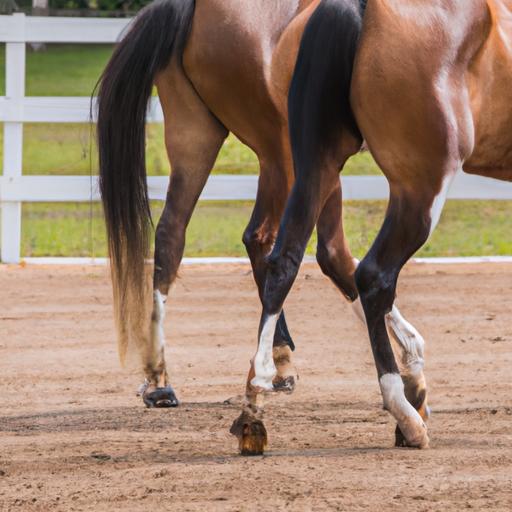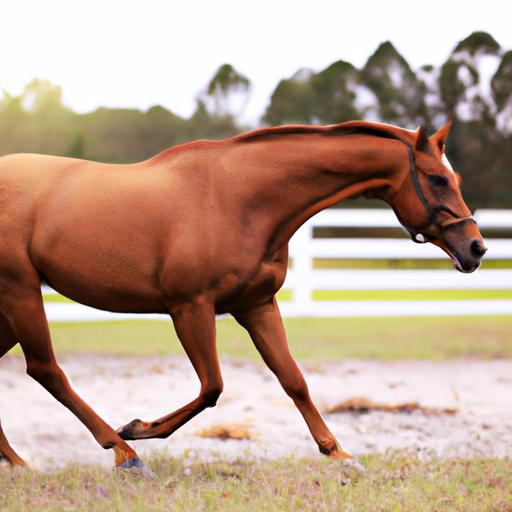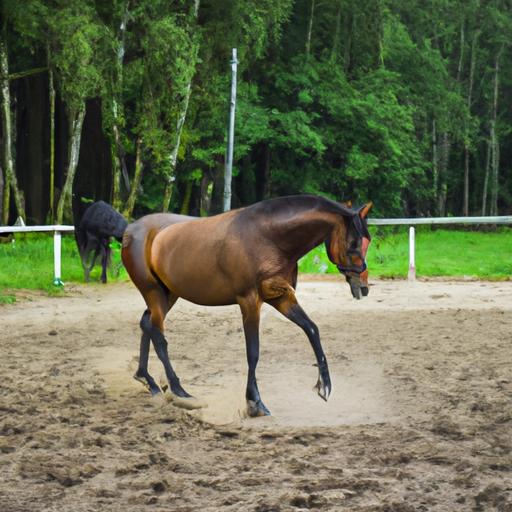Unlock the potential of yearling horses through proper training. Explore the importance, benefits, and debunk misconceptions surrounding yearling horse training.
Introduction to Yearling Horse Training
Have you ever wondered what sets apart a well-trained horse from one that lacks discipline and responsiveness? The secret lies in the early stages of their development – yearling horse training. As a horse enthusiast, you understand the significance of nurturing your equine companion from a young age. In this article, I will delve into the world of yearling horse training, exploring its importance, the benefits it brings, and debunking common misconceptions that may hinder your progress.
Understanding the Importance of Training Yearling Horses
Training a yearling horse is not just about teaching them to respond to your commands. It goes beyond that; it lays the groundwork for their future success as riding or performance horses. By starting early, you can instill good habits, enhance their learning capabilities, and establish a strong foundation of trust and obedience. Yearling horse training sets the stage for a harmonious partnership between you and your equine companion, allowing you to unlock their full potential.
Discussing the Benefits of Proper Yearling Horse Training
Proper yearling horse training yields numerous benefits, both for the horse and the handler. By investing time and effort into training your yearling, you lay the foundation for a lifetime of success. Training helps young horses develop muscle strength, coordination, and balance, promoting their overall physical well-being. Additionally, it fosters mental stimulation and builds their confidence, enabling them to face new challenges with ease. A well-trained yearling horse will be more adaptable, responsive, and safe to handle, making every interaction a joyous and fulfilling experience.
Addressing Common Misconceptions about Training Yearlings
There are various misconceptions surrounding the idea of training yearling horses. Some believe that yearlings are too young to be trained or that they should be left to grow without intervention. However, this couldn’t be further from the truth. Yearlings possess a remarkable ability to learn and adapt, making it an ideal time to shape their behavior. With the right approach and techniques, training yearlings can be a rewarding and fruitful endeavor.
Join me as we embark on a journey to unlock the potential of yearling horses, unraveling the secrets to successful training, and nurturing these young equine stars into well-rounded and accomplished companions.
Next up, let’s explore the ideal time for yearling horse training and how to determine their readiness for training.
Choosing the Right Time for Yearling Horse Training

Exploring the Ideal Age to Start Training Yearlings
When it comes to yearling horse training, timing is crucial. It’s important to find the sweet spot where your young equine companion is ready to embark on their training journey. Generally, the ideal age to start training yearlings is between 12 to 18 months. At this stage, they have developed physically and mentally enough to begin their education. However, it’s essential to remember that every horse is unique, and factors like breed, size, and individual maturity should also be taken into consideration.
Considering the Physical and Mental Development of Yearling Horses
Before commencing training, it’s vital to evaluate the physical and mental development of your yearling horse. Physically, they should have a solid frame with well-formed joints and muscles. Their growth plates should be closed or close to closing to avoid potential damage. Mentally, yearlings should exhibit basic curiosity, willingness, and a desire to explore their environment. These indicators showcase their readiness to absorb new information and adapt to training exercises.
Discussing the Readiness Indicators for Yearling Horse Training
To determine if your yearling horse is ready for training, keep an eye out for specific readiness indicators. These include their ability to maintain attention and focus, respond to basic handling and groundwork, and display a willingness to learn. Observing their overall behavior and response to gentle stimuli can provide valuable insights into their readiness. Additionally, consulting with an experienced trainer or veterinarian can help assess their physical and mental preparedness.
As you prepare to embark on your yearling horse training journey, remember that each horse is unique, and training should be tailored to their individual needs. Taking the time to choose the right moment will set the stage for a positive and successful training experience. In the next section, we will delve into the essential steps to establish a solid foundation in yearling horse training, laying the groundwork for a harmonious partnership.
Establishing a Solid Foundation in Yearling Horse Training

Emphasizing the Significance of Groundwork
Before diving into advanced training exercises, it is crucial to lay a solid foundation through groundwork. Groundwork serves as the building blocks of yearling horse training, fostering trust, communication, and respect between you and your young equine companion. Through groundwork exercises such as leading, lunging, and yielding, you establish boundaries, teach them to respect your personal space, and develop their focus and responsiveness.
Introducing Basic Commands and Obedience Training
Once your yearling has grasped the fundamentals of groundwork, it’s time to introduce basic commands and obedience training. Start with simple cues such as “walk,” “halt,” and “back up,” using clear and consistent signals. Reinforce positive behavior with rewards and praise, gradually shaping their understanding of these commands. Remember, patience and repetition are key during this stage, as yearlings are still learning to process and respond to your cues.
Highlighting the Importance of Desensitization and Exposure
Yearling horses need to be gradually exposed to various stimuli to develop confidence and adaptability. Desensitization plays a crucial role in their training journey, preparing them for potential challenges they may encounter in the future. Introduce your yearling to different objects, sounds, and environments, allowing them to become accustomed to new experiences. This process helps them remain calm and focused, even in unfamiliar situations.
Exposure to Various Stimuli
Part of desensitization involves exposing your yearling to different stimulIntroduce them to everyday objects such as plastic bags, umbrellas, and tarps. Gradually increase the level of intensity, ensuring they remain calm and responsive throughout. By doing so, you prepare them for encounters with unexpected objects or noises, minimizing the risk of spooking or reactive behavior.
Establishing a solid foundation in yearling horse training through groundwork, basic commands, and desensitization is crucial for their overall development. This stage sets the stage for a successful training journey, building trust, obedience, and adaptability. Join me in the next section as we delve into the importance of building trust and bonding with yearling horses.
Note: Please remember to format the headings and subheadings appropriately using markdown when posting the article on your website.
Building Trust and Bonding with Yearling Horses

Exploring Effective Methods to Establish Trust with Yearlings
Building trust is a crucial aspect of yearling horse training. When your horse trusts you, they are more likely to respond positively to your commands and willingly engage in training activities. So, how can you establish trust with your yearling companion?
Firstly, take the time to create a safe and secure environment for your horse. Ensure their basic needs are met, providing them with proper nutrition, regular exercise, and a comfortable living space. A well-cared-for horse is more likely to feel secure and develop trust in their handler.
Additionally, focus on developing a consistent and gentle approach in your training sessions. Be patient and understanding, allowing your yearling to progress at their own pace. By respecting their boundaries and avoiding forceful methods, you foster an environment of trust and cooperation.
Discussing the Importance of Body Language and Communication in Bonding
Effective communication is key to building a strong bond with your yearling horse. Horses are highly perceptive animals that rely on body language to understand and respond to their surroundings. By honing your own body language skills, you can effectively convey your intentions and build a deeper connection with your yearling.
When interacting with your yearling, pay close attention to your posture, facial expressions, and gestures. Maintain a relaxed and confident demeanor, using subtle cues to guide their behavior. Remember, horses are experts at reading nonverbal cues, and they will respond positively to clear and consistent signals.
Furthermore, be mindful of your energy and emotions. Horses can sense your state of mind, so it’s important to approach each training session with a calm and positive mindset. By projecting a sense of trust and assurance, you encourage your yearling to relax and trust you in return.
Addressing the Role of Consistent Positive Reinforcement in Building a Strong Bond
Positive reinforcement plays a vital role in building a strong bond with your yearling horse. By rewarding desired behaviors, you create a positive association and motivate your horse to repeat those behaviors. This approach fosters a sense of partnership and encourages your yearling to actively participate in the training process.
When using positive reinforcement, be consistent and timely with your rewards. Offer praise, treats, or gentle pats immediately after your yearling correctly responds to a command or exhibits desired behavior. This reinforces their understanding and reinforces the bond between you.
Remember, building trust and bonding with your yearling horse is a gradual process that requires patience, consistency, and understanding. By employing effective methods to establish trust, utilizing clear communication through body language, and incorporating positive reinforcement, you can develop a deep and meaningful bond with your yearling companion.
Next, let’s explore how to introduce yearling horses to riding equipment and the process of saddling.
Introducing Yearling Horses to Riding Equipment and Saddling
Step-by-Step Guide to Introducing Yearling Horses to Saddles and Bridles
Now that your yearling horse has successfully completed groundwork and basic obedience training, it’s time to take the next step – introducing them to riding equipment and saddling. This crucial phase sets the stage for their future as ridden horses. Follow this step-by-step guide to ensure a smooth and positive experience for both you and your yearling:
-
Desensitization: Begin by desensitizing your yearling to the presence of riding equipment. Gently introduce them to the sight, sound, and touch of saddles, bridles, and other riding accessories. Use gradual exposure, allowing them to familiarize themselves at their own pace.
-
Positive Association: Create a positive association with the equipment by incorporating treats, praise, and rewards during the introduction process. This helps your yearling associate the equipment with positive experiences, reducing anxiety and building trust.
-
Pressure-Free Introduction: Start by placing the saddle pad on their back, allowing them to feel the weight without any pressure. Gradually progress to placing the saddle on their back, ensuring it fits properly and doesn’t cause discomfort. Use a similar approach when introducing the bridle, allowing them to become accustomed to the bit and reins.
-
Gradual Tightening: Once your yearling is comfortable with the equipment, slowly tighten the girth or cinch of the saddle, making sure not to cause any distress. Keep an eye on their body language and response, adjusting the tightness as needed.
-
Movement and Sensitization: Begin moving your yearling around with the equipment on. Start with short walks or lunging exercises, allowing them to become accustomed to the feel of the saddle and bridle while in motion. Gradually increase the duration and intensity of these exercises as they grow more confident and comfortable.
Discussing the Importance of Proper Fitting and Comfort for Yearlings
One of the key factors in introducing riding equipment to yearling horses is ensuring proper fitting and comfort. Ill-fitting saddles or bridles can lead to discomfort, pain, and even behavioral issues. Here’s why it’s crucial to prioritize proper fitting:
-
Physical Comfort: A well-fitted saddle and bridle distribute weight evenly, preventing unnecessary pressure points and discomfort. This allows your yearling to move freely and without restrictions, promoting their overall physical well-being.
-
Preventing Injuries: Poorly fitting equipment can cause rubbing, pinching, or chafing, leading to sores and injuries. By ensuring proper fitting, you minimize the risk of saddle sores, girth galls, and other related issues.
-
Mental Readiness: When your yearling feels comfortable and at ease with the equipment, they are more likely to approach training sessions with a positive mindset. This mental readiness paves the way for successful riding and advanced training in the future.
Highlighting the Gradual Approach and Patience Required During the Process
Introducing yearling horses to riding equipment and saddling requires a gradual approach and ample patience. Rushing or forcing the process can lead to resistance, fear, and setbacks. Remember these important points:
-
Take Your Time: Each horse is unique, and their readiness to accept riding equipment may vary. Respect their individual pace and progress accordingly. Avoid rushing the process and allow them to become fully comfortable at each stage before moving forward.
-
Positive Reinforcement: Throughout the introduction process, reinforce positive behavior with rewards, praise, and encouragement. This creates a positive association with the equipment and motivates your yearling to continue their learning journey.
-
Seek Professional Guidance: If you’re unsure or lack experience in introducing yearlings to riding equipment, consider seeking guidance from a professional trainer or experienced horseperson. Their expertise can provide valuable insights and ensure the process is carried out safely and effectively.
By following these steps, prioritizing proper fitting, and embracing patience, you’ll set the stage for a successful transition to riding and advanced training for your yearling horse.
Stay tuned for the next section, where we’ll explore the progression to riding and advanced training for yearling horses.


